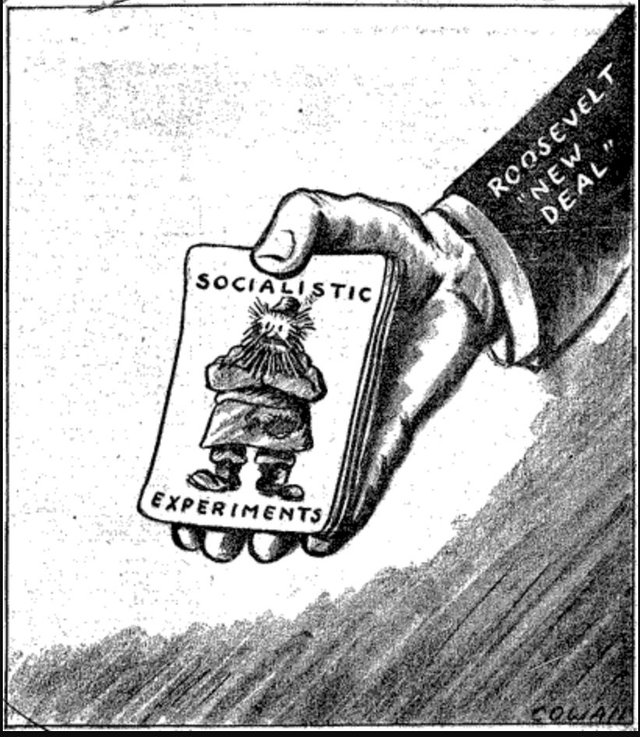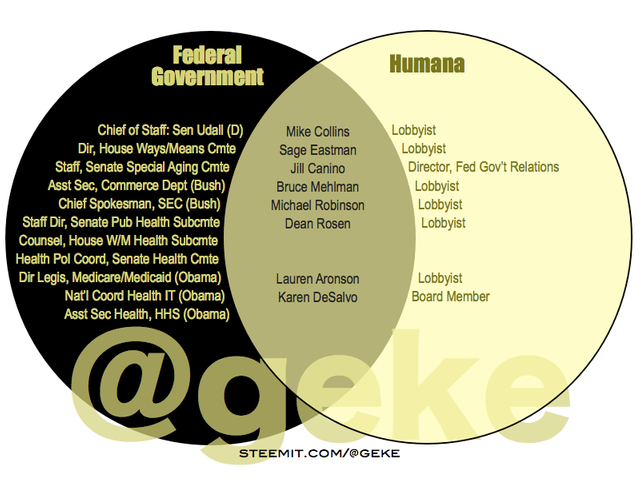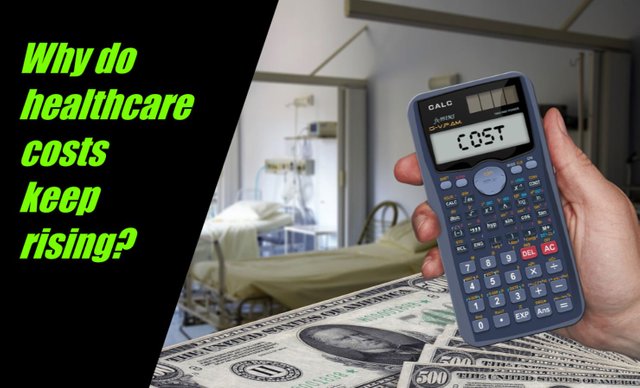The High Cost of Health Care: is Bernie Sanders' "Medicare for All" the solution?
Is democratic socialism the solution to what is, admittedly, a huge problem in the U.S. healthcare system?
If we break down all its various definitions and iterations, socialism boils down to one, pretty simple idea: transferring the costs and benefits of individuals onto society. It's an imprecise but popular attempt to average things out by throwing individual wins into the same pot with individual losses and hoping society comes out ahead.
The best example of socialism in action is the nuclear family. Parents bring a benefit in the form of income into the household and, generally, no individual family member is required to “fend for himself” as family benefits and costs are pooled and shared.
Another example of something we might call “voluntary socialism” or “private socialism” is insurance. It's an attempt to transfer risk from the individual policy holder onto a larger group of policy holders (rather than society, as a whole) in hopes of lessening the burden on any one individual by sharing it with the group.
Ultimately, socialism is a transfer of consequences from individuals onto society.
Large-scale, government socialism (as opposed to families or insurance pools) is most commonly implemented in one of two ways: 1) government management of some public or public-private goods/services (as in democratic socialism), or 2) government ownership of all goods/services (as in communism).
Democratic socialism already exists in the United States today. But when exactly did it first appear in this otherwise “capitalist” country of ours?

Some would argue that American democratic socialism (ADS) made its debut during FDR's New Deal programs of the 1930s. Others think ADS first showed up in the late 1800s, when state governments began to fund road maintenance. And still others point back even earlier, to the 1870s when public schools popped up in virtually every American state.
The truth is, ADS goes back much farther than that. Democratic socialism in America predates the theories of Karl Marx by over a century. As a matter of fact, it predates the formation of our federal government entirely. It was in 1639 that the Mather School opened near Boston, the first public school on colonial soil to be funded by “rents” or taxes paid by local landowners.
Other examples of ADS followed, including the charter of the First Bank of the United States in 1791. This was America's first central bank (if you don't count the Bank of North America which opened in 1782, prior to the adoption of the Constitution) and was part of Alexander Hamilton's grand scheme of “public credit.” Sixty years later, Marx would list central banking as his own fifth measure to revolutionize (destroy) capitalism: “Centralisation of credit in the hands of the state, by means of a national bank with State capital and an exclusive monopoly.” By increasing the money supply, a central bank can transfer wealth to either the government or its member banks. As the dollar in your wallet becomes more diluted (from increased supply) it loses value. That lost value shows up in the newly printed dollar being loaned out to the government or a commercial bank; that dollar is literally worth more than yours. Conversely, by decreasing the money supply, a central bank transfers added risk and costs to society in the form of higher interest rates.
Another early instrument of ADS or American democratic socialism was the Tariff Act of 1789 that taxed goods imported to America on foreign ships at 50 cents per ton. (Domestic ships paid 6 cents per ton.) Any tariff is socialist in nature because it seeks to transfer the costs and risk suffered by some firms (in this case, domestic manufacturers having to compete with foreign imports) to a larger group of both competing firms and consumers, in general (as it's consumers who ultimately pay the increased costs a tariff creates).
This other half of democratic socialism is the direct opposite of “spreading the wealth” -- instead, it's a way of spreading the costs. Both types of transfers, wealth and costs, constitute socialist systems.
Fast forward to today where you'll now likely recognize that the democratic socialism of Bernie Sanders is nothing new. So what's the problem? Why are conservatives, libertarians, capitalists, and free market economists so opposed to something our federal government has been doing, right out in the open, since it started?
It's because of democratic socialism's negative side effect: consistently rising costs. Democratic socialism doesn't make stuff free; it makes stuff more expensive.

Consider, for example, that the price of an average car back in 1920 was about $250. Today, according to Edmunds, the price of an average car is $37,000. Oddly enough, “democratic socialism” is the reason why we see these increasing prices over time.
That's because democratic socialism creates two problems in our economy: 1) inflation, and its twin sister, 2) rising costs. As the dem-socialist central bank increases the money supply -- something today we call “quantitative easing” -- the value of money goes down. We can see that loss in value in the corresponding increase in prices economy-wide.
That's the first problem with democratic socialism. But prices also rise industry-wide when those industries are subsidized. And tax-subsidized industries are the hallmark of democratic socialism, constituting a second and even larger problem.
For an example, let's look at healthcare costs. Before the advent of Medicare and Medicaid in 1965, healthcare costs were rising at around 9% a year. Part of that, about 2%, was due to monetary inflation. The rest was due to increased demand as the advent of health insurance expanded the healthcare industry with increased access (as we learn in Cost Benefit Jr., prices rise when quantity demanded increases). After Medicare and Medicaid passed in 1965, healthcare costs began rising at an even higher 12% a year.
The attempt to transfer the costs of healthcare from the individual to society didn't lower costs; it resulted in an immediate 3% increase in costs. And when the HMO Act passed in 1973 things got worse, with healthcare costs now increasing at 14% a year.
This isn't how a regular economy should behave. Over time, as innovation and increased efficiency streamline production methods and reduce waste, goods should get cheaper over time... not more expensive.
For example, when Henry Ford first introduced the Model T, it cost $850 to build. But after streamlining his production process with the assembly line, the price of the Model T fell to around $250. Without the existence of monetary inflation, the price would have fallen even lower.
But today, despite huge leaps forward in innovation, efficiency, and controlling waste, the price of cars continues to rise. Of course, part of the reason is still monetary inflation, but over the last 50 years there has been a huge number of dem-socialist transfers involving the U.S. auto industry:
◦ Auto makers have benefitted since the industry's inception from the taxpayer funding of roads (the cost of a necessary industry resource transferred to society).
◦ Since 1976, 17 states have subsidized auto makers with tax breaks and employee training funds (the cost of doing business and training employees transferred to society).
◦ Between 2008 and 2014 GM, Ford, and Chrysler received $10 billion in un-repaid taxpayer bailouts (a percentage of the auto industry's 2008 losses transferred to society).
◦ ZEV or zero emission vehicle credits subsidize auto makers like Tesla (a percentage of Tesla's costs transferred to competing firms that fail to produce ZEV quotas).
These are just a few examples of democratic socialism at work in the auto industry and the net effect isn't, obviously, that cars become free for the needy. In fact, if you're a taxpayer, you're paying many of the constantly increasing auto industry costs, whether you own a car or not.
But Bernie Sanders isn't proposing expanding ADS for the auto industry; he's targeting the health insurance industry. And because he claims that his vision of democratic socialism is closer to the Scandinavian model than that of Venezuela, we should take note of the striking key difference between Scandinavian healthcare and Sanders' Medicare For All (M4A) proposal.
In both Sweden and Denmark, for example, though everyone is covered by public healthcare funded by the government, people can also choose to purchase private insurance to receive faster care and “skip the line.” Under M4A, however, it would be illegal for any private health insurance provider to compete with the government's Medicare benefits:
SEC. 107. PROHIBITION AGAINST DUPLICATING COVERAGE. (a) IN GENERAL.—Beginning on the effective date described in section 106(a), it shall be unlawful for—(1) a private health insurer to sell health insurance coverage that duplicates the benefits provided under this Act; or (2) an employer to provide benefits for an employee, former employee, or the dependents of an employee or former employee that duplicate the benefits provided under this Act.
This is full-on nationalization of the health insurance industry. As such, it's less like Scandinavian socialism and much closer to the communist model where government, alone, owns the industry and there are no competing firms.
Support for such a drastic move toward communism comes from understandable frustration with a health insurance industry that has become practically predatory. Health insurance conglomerates extract high monthly premiums from their customers who are saddled with even higher deductibles and tightly restricted provider choices. And through its cozy connections to government, the industry succeeded in making it illegal, through Obamacare, to refuse to buy their over-priced products.
The product these companies most love to sell are Medicare Advantage policies. Medicare Advantage is “private” Medicare insurance, introduced in the 1970s, that's subsidized by the federal government -- a classic example of both democratic socialism and the key component of corporatism, the “public-private partnership.” A health insurance company like Humana or Cigna will receive money from the government for each of its Medicare Advantage customers. The companies ostensibly use this money to pay for the healthcare services used by their customers, but most only insure healthy people, saving that money in their own pockets. If their customers actually do get sick, these companies use co-pay increases and denial of claims to force sick customers to transfer over to “regular” Medicare. This is rent-seeking at its worst; health insurance companies are stepping in between healthy seniors and their government Medicare benefits, pocketing the funds and giving their customers little in return.
So how did we get here? Why is this allowed, even encouraged to happen? The biggest part of the problem is that these health insurance companies literally write their own laws and regulate themselves. Their government-staffer employees and lobbyists continually pass through Washington's “revolving door” between private health insurance employment and agencies like the Department of Health and Human Services (HHS).
Karen DeSalvo, the former assistant secretary for health at HHS, was also commissioner of the Medicare PAC, providing Congress with analysis and policy advice on Medicare while at the same time sitting on the board of Humana.

Marilyn Tavenner became the president of the health insurance industry's biggest lobbying group, America's Health Insurance Plans (AHIP), after stepping down from her government position as chief administrator of the Centers for Medicare and Medicaid Services.
Other notable lobbyists for health insurance companies include former congresswoman Allyson Schwartz (D-PA), former SEC spokesman Michael Robinson, former Medicare/Medicaid legislative director Lauren Aronson, and major Democratic fundraiser Heather Podesta.
But the most glaring example of health insurance cronyism exploiting Washington's revolving door has to be Karen Ignagni. According to her current employee bio, “Prior to joining EmblemHealth in September 2015, Ms. Ignagni was President and CEO of America’s Health Insurance Plans (AHIP), the national trade association representing the health insurance industry. At AHIP, Ms. Ignagni was active in working with the White House and Congressional leadership on the development of milestone health reform legislation, including the Patient Protection and Affordable Care Act (ACA) and the Medicare Modernization Act.” Meaning that Obamacare, the legislation that made it illegal not to purchase health insurance, was developed in part by the head of the health insurance industry's largest lobbying group.
Let that sink in.
We're now in a position where health insurance companies have so much power in Washington that they no longer worry about the market forces inherent in a normal capitalist economy. Let that also sink in because it's government protection from such market forces that allow industry premiums and costs to skyrocket. Government not only allows, it facilitates the unearned (ADS) transfer of wealth to health insurance companies.
Still, many Democrat voters eager to see M4A pass blame this horrifying situation not on government but on capitalism. Their solution? More government and more socialism/communism while remaining completely unaware that it's democratic socialism that caused this problem in the first place!
Opponents of M4A argue that the best way to make health insurance companies accountable to their customers and to stop this obscene transfer of wealth is to stop giving these corporations blatant government protections like Obamacare, to stop giving these corporations access to lawmakers through their powerful lobbying activities, and to stop giving these corporations the ability to draft healthcare policy in the halls of Congress and the Department of Health & Human Services.
But that's not what Bernie Sanders or any other presidential candidate is recommending.
Just know that we'll never see the checks and balances inherent in a natural, free, competitive economy until we stop the socialist transfers of wealth and risk that run rampant in our current health insurance industry facilitated by the federal corporatist system in Washington D.C.



I think it's definitely worth doing a health check. For example, aimed at evaluating individual body systems. Such a study is suitable for those who plan to become a parent, have a genetic predisposition to diseases or observe malfunctions in the work of any organ. Now the most popular is the examination of the heart and blood vessels, which includes radiography, echocardiography, electrocardiogram. You may wonder what is better and more profitable - Medigap Plan F vs Plan G vs Plan N. It's up to you.
Hi @geke!
Your post was upvoted by @steem-ua, new Steem dApp, using UserAuthority for algorithmic post curation!
Your UA account score is currently 4.602 which ranks you at #1192 across all Steem accounts.
Your rank has improved 11 places in the last three days (old rank 1203).
In our last Algorithmic Curation Round, consisting of 79 contributions, your post is ranked at #67.
Evaluation of your UA score:
Feel free to join our @steem-ua Discord server
The solution is definitely complicated. I'm not sure it's the final decision to solve the issue
Indeed, healthcare now costs so much that only a small fraction of people can afford it. For example, Diabetes is one of those diseases so tragic that you see how your family members go to pieces and you cannot do anything but be there, in that place seeing that you can help, even though the treatments only help little, it is to see that happy smile once more, in case someone serves this page medicareinsuranceaz.com has an excellent catalog of drugs against diabetes and other diseases.